| Compact SUV; Built in South Korea |
|
|
| Good condition price range: $9,000 – $22,400* |
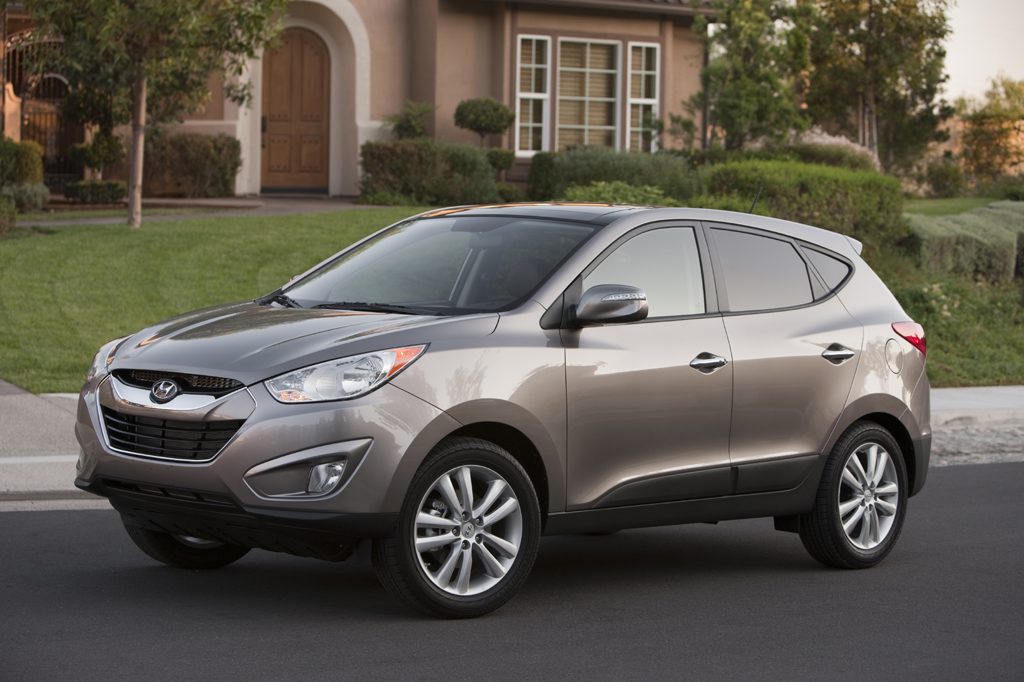
2010 Hyundai Tucson front
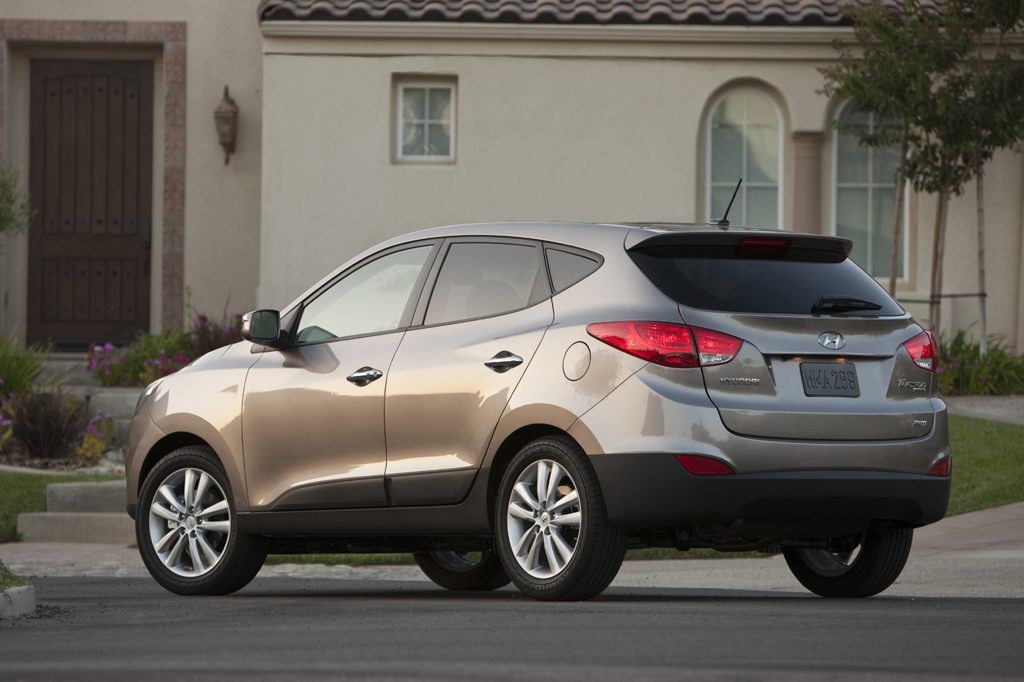
2010 Hyundai Tucson rear
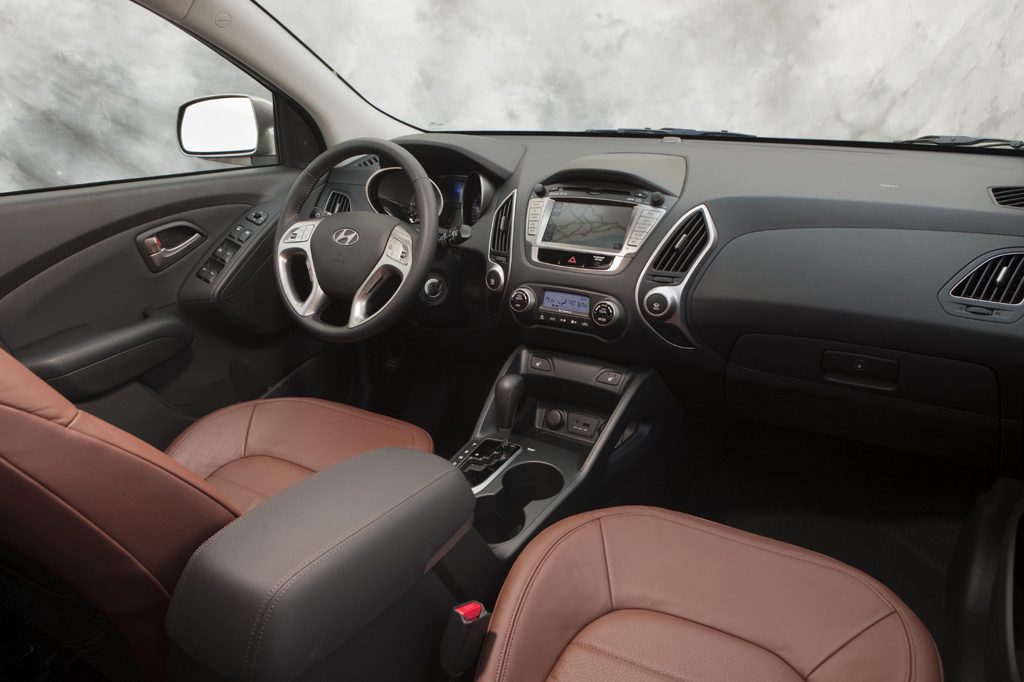
2010 Hyundai Tucson interior
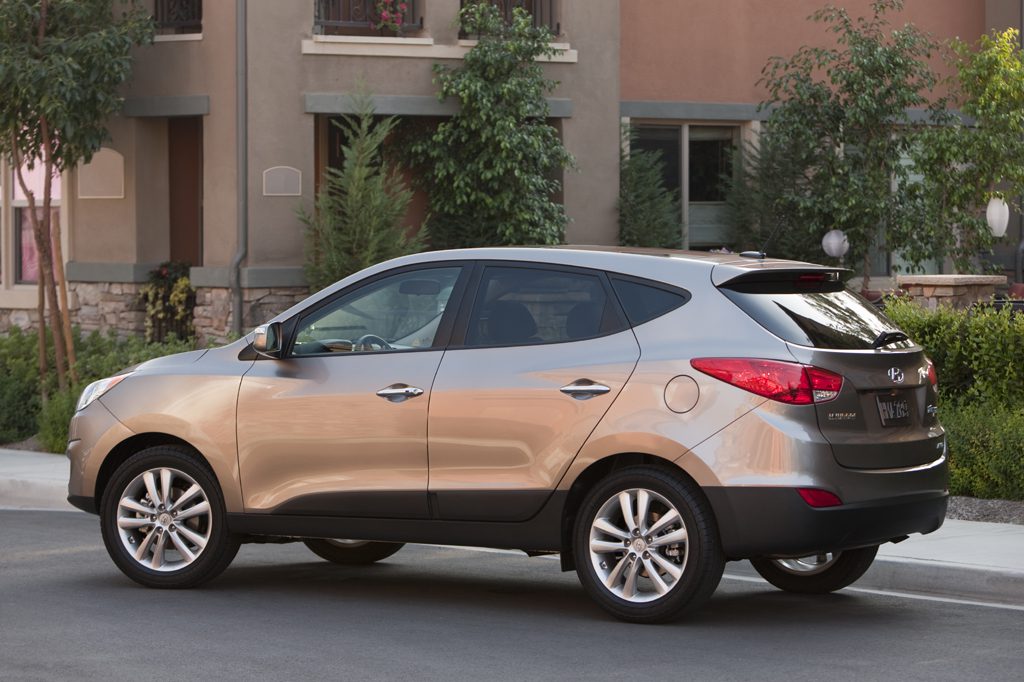
2010 Hyundai Tucson
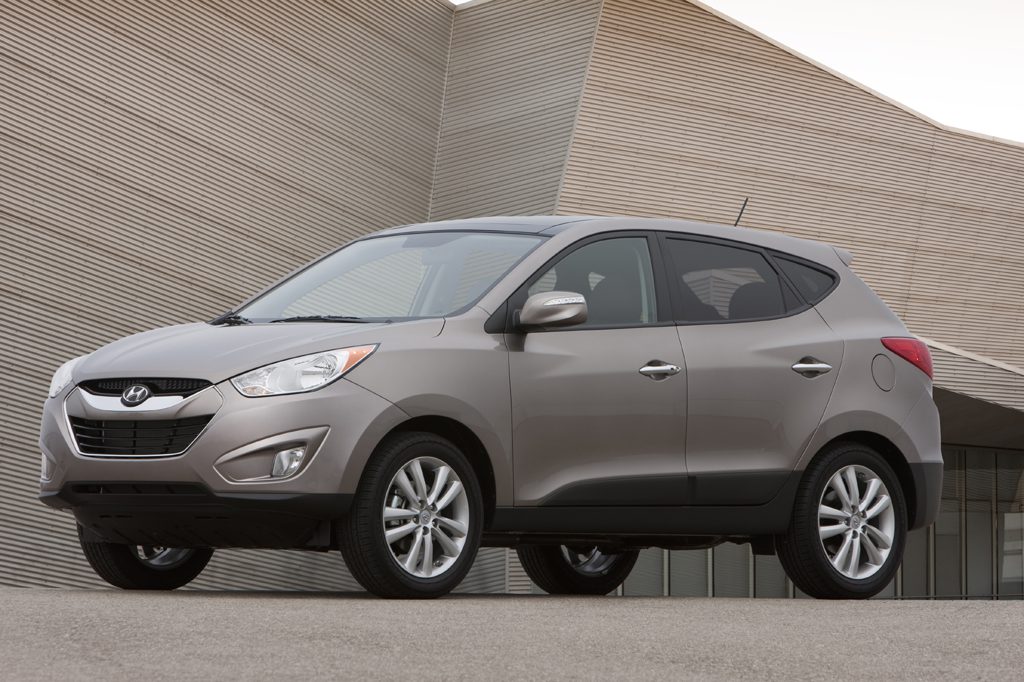
2010 Hyundai Tucson
| Pros: |
|
| Cons: |
|
With this redesign, Tucson remains a strong value in the compact-SUV class, earning Recommended (2011) and Best Buy (2012) designations. Its blend of maneuverability, comfortable interior accommodations, and level of standard features make it a competitive player in this segment. Though the new four-cylinder engine isn’t as refined as others in the class, there’s no lack of power, and it delivers decent fuel economy. Avoid the aggravating manual transmission in favor of the slick automatic. Looking for a V6? Though Tucson’s is gone, you’ll still find one in the larger Santa Fe.
Overview
Redesigned for 2010, Hyundai’s Tucson gained freshened styling, a new engine, and new features. Seating five, this compact crossover SUV was about 3 inches longer and an inch wider than the 2009 model. Tucson came in base GLS and uplevel Limited trim levels. The sole engine for all models was a new 176-horsepower 2.4-liter four-cylinder, teamed with a six-speed manual or six-speed automatic transmission. This powertrain replaced prior 140-horsepower four-cylinder and 173-horsepower V6 engines. Front-wheel drive and all-wheel drive were available on both trim levels. Standard safety features included antilock braking, traction control, an antiskid system with rollover sensing, curtain-side airbags, and front-side airbags. Newly standard on the 2010 Tucson was Downhill Brake Control, designed to maintain constant speed when traveling downhill. Also standard was Hillstart Assist Control, which was designed to keep the vehicle from rolling backward down an incline. Leather upholstery and heated front seats were Limited-exclusive standard features. A navigation system and rearview camera were new features for Tucson and optional on both GLS and Limited. A panoramic sunroof was optional on the Limited. Tucson competitors included the Ford Escape, Honda CR-V, Subaru Forester, and Toyota RAV4.
Yearly Updates
| 2011 Tucson Volume GLS and top-line Limited trim levels were joined for 2011 by a base GL. Offered only with front-drive, the new model had a 2.0-liter four-cylinder engine, rated at 165 horsepower. GLS and Limited models retained the 176-horsepower, 2.4-liter four-cylinder. The GL could have a five-speed manual or six-speed automatic transmission. All GLS and Limited models now held a six-speed automatic; manual shift disappeared. A premium suspension became standard on the Limited, and all AWD models now had heated front seats. GLS models gained a Popular Equipment package, which had previously been optional. |
| 2012 Tucson Only minor changes marked the 2012 edition of the Hyundai Tucson. |
| 2013 Tucson The Hyundai Tucson got more standard equipment such as heated front seats on the front-wheel-drive GLS model, fog lights and automatic climate control on all GLS models, and keyless entry/engine start on the Limited trim level. The 2013 Tucson was largely unchanged otherwise. |
| 2014 Tucson For 2014, both the 2.0-liter and 2.4-liter engines gained direct injection for better performance. A manual transmission was no longer available. The entry level GL model was also dropped. A GLS powered by the 2.0-liter engine became the base model. |
